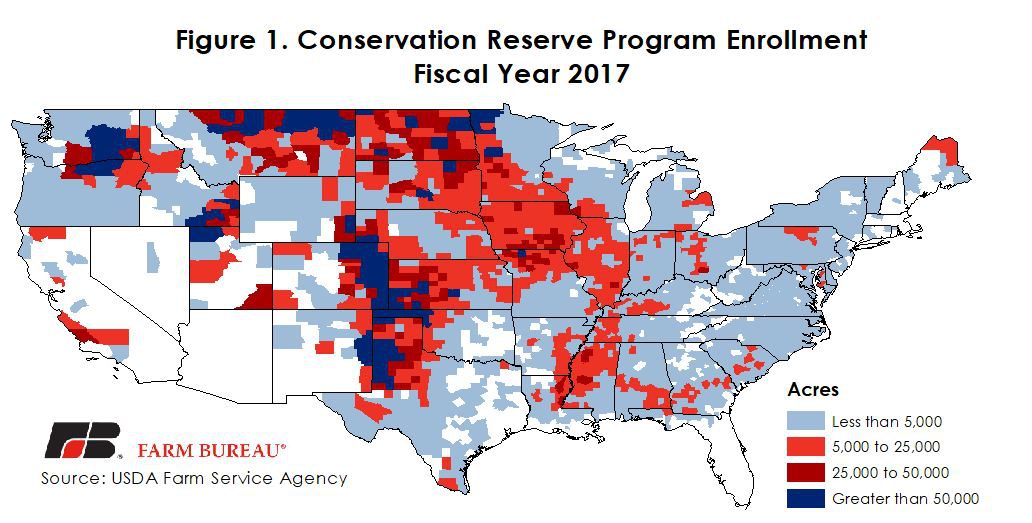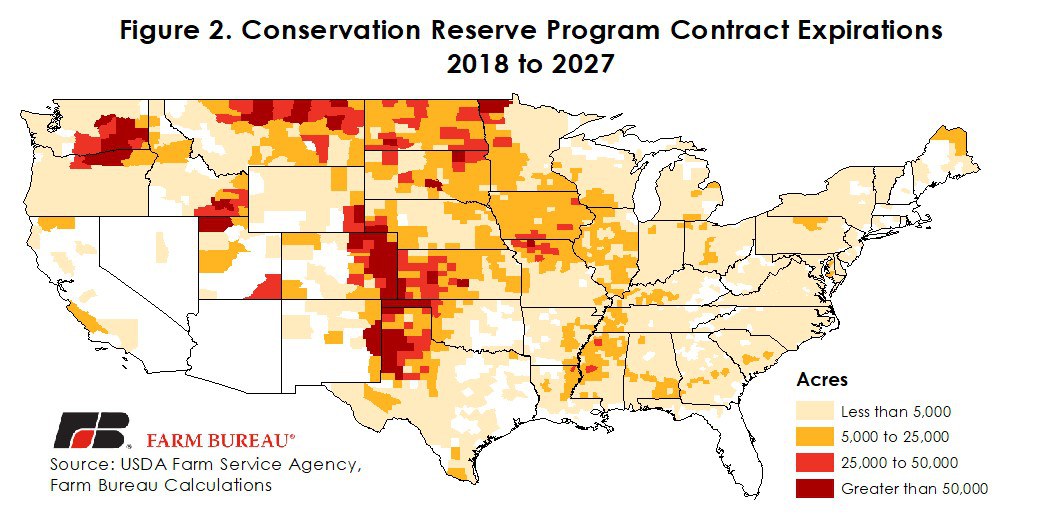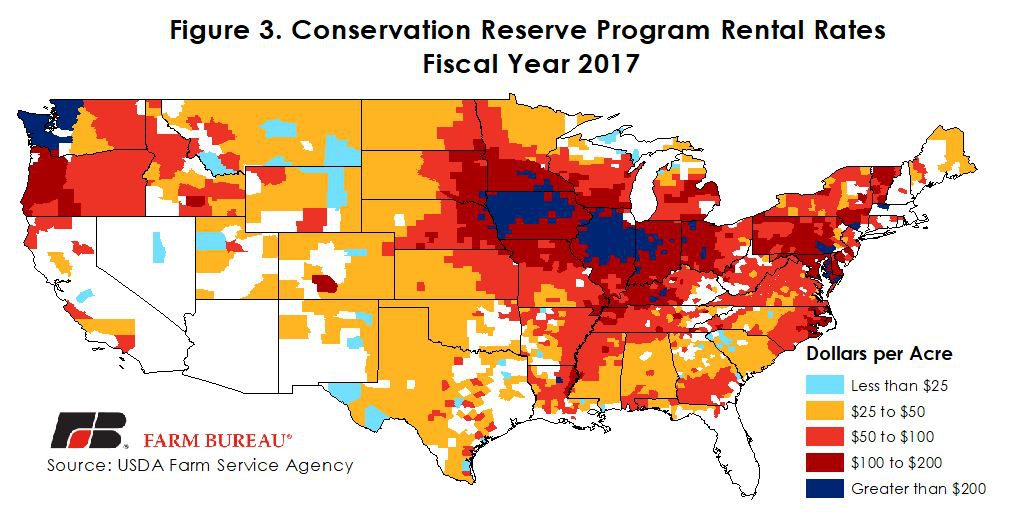USDA Resumes Conservation Reserve Program Enrollment
TOPICS
USDA
photo credit: AFBF Photo, Morgan Walker
John Newton, Ph.D.
Former AFBF Economist
The Conservation Reserve Program is a voluntary program aimed at conserving soil, water and wildlife resources by removing highly erodible and environmentally sensitive lands from agricultural production and installing resource-conserving practices. Contracts for land enrolled in CRP are 10 to 15 years in length. In exchange for enrolling land in CRP, USDA provides a yearly rental payment. Since 1987, USDA has made nearly $50 billion in CRP payments to landowners.
For fiscal year 2016, 23.9 million acres were enrolled in the CRP program, and following requirements of the 2014 farm bill, no more than 24 million acres could be enrolled in CRP following fiscal year 2017. With CRP acreage edging close to the enrollment cap, in early May 2017, USDA issued a notice that only high-priority lands would be accepted for continuous enrollment in fiscal year 2017. (For more information on CRP enrollment trends, see the May 2017 Market Intel “Change on the Horizon for the Conservation Reserve Program?”)
This pause in CRP enrollment allowed USDA to review acreage enrolled in the program and to avoid exceeding the 24 million-acre cap set in the 2014 farm bill. For fiscal year 2017, Farm Service Agency data revealed that 23.4 million acres were enrolled in the CRP. Currently, according to USDA, CRP enrollment is approximately 22.7 million acres. Texas has the most CRP acreage at 2.9 million acres, followed by Kansas at 2.1 million acres. The top five states in terms of CRP enrollment are Texas, Kansas, Iowa, Colorado and North Dakota. Combined, these states have more than 10 million CRP acres and represent approximately 43 percent of all CRP ground, Figure 1.

CRP Expirations and Enrollment Opportunity
Over the next decade, 19 million acres are set to expire from the CRP, Figure 2. An additional 2.5 million CRP acres expired in 2017. Like CRP enrollment, most of the CRP expirations are in the top five states. These states represent 45 percent or 8.6 million acres of CRP contract expirations over the next decade.

With millions of acres set to expire from the CRP in the coming years, USDA recently announced that from June to August 2018, USDA will resume accepting applications for continuous CRP enrollment. The emphasis on continuous CRP enrollment will ensure that the most sensitive acreage will be enrolled in the program. Lands and practices prioritized for enrollment include grassed waterways, filter strips, riparian buffers and wetland restoration.
Importantly, rental rates for new CRP enrollment will be determined using updated soil rental rates and these contracts will not include incentive payments as part of the contract. This will address the unintended consequence of CRP acres competing with farmland acreage new and beginning farmers are looking to lease.
During fiscal year 2017, CRP payments totaled $1.8 billion and rental rates averaged a record-high $76.73 per acre, up from $72.61 in the prior year. CRP rental rates ranged from a low of $10.16 per acre in Nevada to a high of $207.20 per acre in Massachusetts. At the county level, CRP rental rates were as high as $561.75 in Whatcom County, Washington. Figure 3 highlights CRP rental rates by county for fiscal year 2017. As shown, CRP rental rates were the highest in portions of the Corn Belt, Pacific Northwest and Northeast.

Summary
To prioritize CRP enrollment and stay under the farm bill-mandated acreage cap, USDA mostly stopped accepting CRP applications in mid-2017. Now, following a reduction in CRP acreage, USDA will resume continuous CRP enrollment through August 2018.
Under this new enrollment opportunity, land enrolled in the CRP will be subject to additional ranking and rental rate criteria. USDA will emphasize environmentally sensitive land and rental rates will be determined using an updated methodology designed to address the unintended consequence of CRP acres competing with farmland acreage new and beginning farmers are looking to lease.
Going forward, there is congressional interest in expanding the CRP acreage cap and in updating the rental rate methodology to consider both the enrollment duration and comparable county-level cash rents.
Trending Topics
VIEW ALL